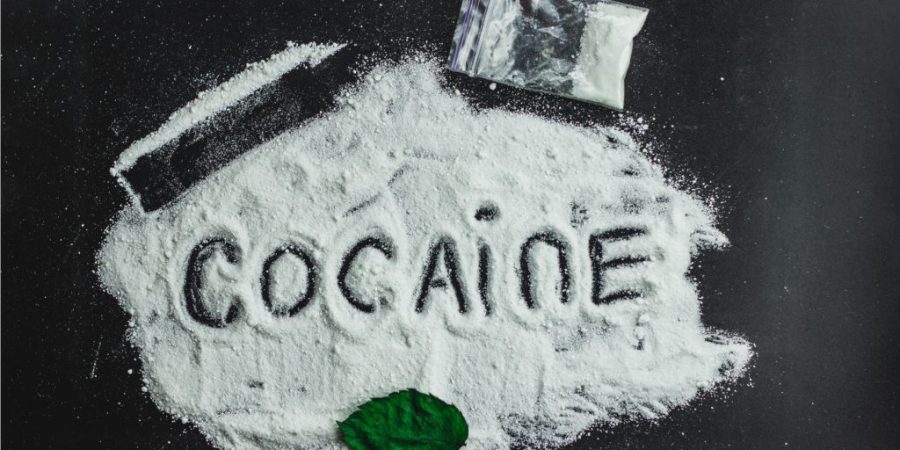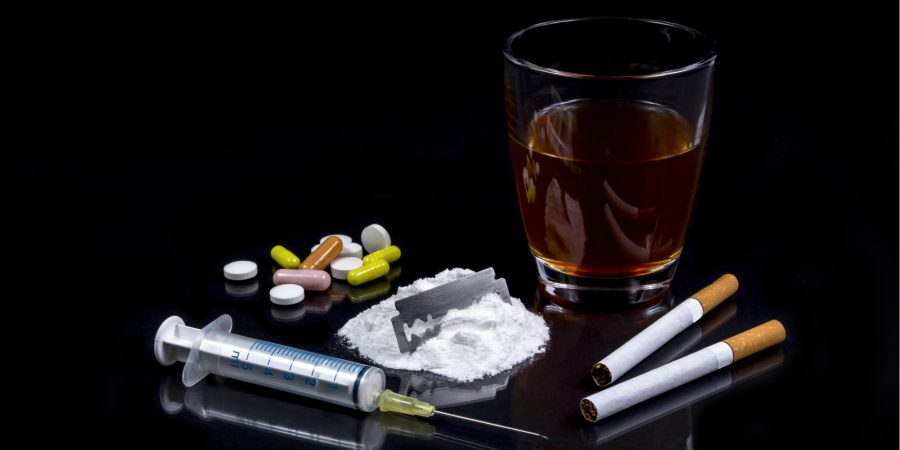
The risk of cocaine overdose has been steadily rising over the past twenty years. This is due largely to illicit drugs being lace fentanyl which poses a danger to people who are struggling with a cocaine use disorder. If you or a loved one are struggling with cocaine addiction, professional addiction treatment services may be the next step to helping you achieve long-term recovery.

Nearly 5.5 million people in the United States use cocaine every year, and 19,447 people died from a cocaine overdose in 2020. These coke overdoses contributed to a notable increase in drug overdoses during the 2020 timeframe. A few reasons for this uptick are thought to include pandemic stress and fentanyl-laced cocaine.
Table of Contents
The Signs of Cocaine Overdose
Cocaine is a powerful stimulant and can have life-threatening consequences. In fact, taking too much cocaine can result in overdose and is involved in roughly 1 in 5 overdose deaths. Understanding the signs of a cocaine overdose can go a long way in helping someone recover from cocaine toxicity. To illustrate, cocaine overdose symptoms often include:
- Elevated heart rate
- Excessive sweating
- High body temperature
- Extreme anxiety or agitation
- Delirium
- Seizures
- Stroke
- Heart failure
If you suspect somebody is experiencing cocaine overdose symptoms, immediate medical attention is warranted as prompt cocaine toxicity treatment could save their lives.
Polysubstance Abuse

Polysubstance is a term that describes multiple substance use. For example, combining cocaine with other drugs, such as alcohol, would be considered polysubstance abuse. However, this habit of mixing drugs can significantly increase the risk of overdose. When taken together, cocaine and alcohol create a new, more dangerous substance within the body called cocaethylene. Cocaethylene is more toxic to the heart and liver than either substance alone, increases blood alcohol and cocaine levels, and stays in your system for longer. In fact, regular cocaine users may even overdose on coke with their typical dose if they drink while using.
The Cocaine Fentanyl Contamination
The risk of buying cocaine laced with fentanyl has increased exponentially over the last several years. In fact, overdose rates involving cocaine have quadrupled since 2014, and data from the CDC shows that synthetic opioids are to blame. Fentanyl laced in cocaine is particularly prevalent in the Great Lakes and Northeast regions, including Ohio, West Virginia, Kentucky, and New Hampshire.
Unfortunately, fentanyl is often present in cocaine unbeknownst to the buyer and can lead to accidental overdose. Fentanyl is an opioid. Therefore, the signs of fentanyl overdose are different from cocaine overdose symptoms. Signs of fentanyl (opioid) overdose include:
- Slowed or stopped breathing
- Loss of consciousness
- Lips that are blue or discolored
- Vomiting or gurgling noises
- Cold, clammy skin
Opioid overdose is an emergency. Therefore, call 911 at once if you suspect somebody is experiencing a fentanyl overdose. In addition, administer naloxone if it is available.
Long-Term Consequences of Cocaine Use
The negative effects of cocaine use reach beyond short-term concerns. Moreover, using too much cocaine will cause several long-term consequences. For example, cocaine affects the brain’s reward system, leading people to lose interest in activities they once enjoyed. Additionally, the heart is affected and several heart-related diseases associated with cocaine use.
Further, how you use cocaine can influence the type of long-term consequences that cocaine use causes. For instance, people who snort cocaine report frequent nose bleeds, loss of smell, and irritation of the nasal canal. On the other hand, smoking crack cocaine will result in damage to the lungs, and injecting cocaine put users at risk of infectious diseases such as Hepatitis C or HIV.
Social and Psychological Consequences of Cocaine Addiction
Long-term consequences of cocaine use aren’t limited to physical ailments. In addition, cocaine use disorder can lead to substantial challenges in everyday functioning. For example, people with substance use disorders struggle to keep social relationships, hold jobs, and can face significant financial insecurity. In this way, the nature of addiction makes it difficult to prioritize important life events and responsibilities and instead narrows a person’s focus to drug use.
Treatment for Cocaine Use Disorder

Ultimately, cocaine addiction is a brain disease that alters a person’s ability to stop using drugs on their own. However, this disease is highly treatable with the help of addiction treatment services. In this manner, long-term recovery is achievable by helping people to manage withdrawal symptoms, teaching coping mechanisms for cravings, and addressing the root cause of addiction. At The Woods at Parkside, our Ohio addiction facility offers numerous comprehensive services to help you tackle a substance abuse disorder.
Cocaine Detox
The first step of treating a cocaine use disorder is detox at a medical detox facility. Drug detox is designed to make the first days of sobriety as comfortable and safe as possible, with targeted medication plans and 24/7 medical monitoring. Detox typically lasts 3-10 days and should be followed by addiction treatment in order to address psychological reasons for using cocaine.
Residential Rehab for Coke Addiction
Residential treatment is where the true work of recovering from a substance use disorder begins. During residential treatment, our clients live on-site and receive intensive therapies to help them overcome their addiction, including, but not limited to:
- Group therapy
- Individual therapy
- Medication-Assisted Treatment
- Relapse prevention
- 12-step facilitation
- Stress management
These evidence-based treatment methods work to support intentions for recovery, provide our clients with tools to resist the temptation of substance use, and repair the damage that their addiction has caused.
Outpatient Addiction Treatment
Outpatient care programs are less intensive than residential and typically consist of three days of treatment a week. People in our outpatient program can continue going to work and returning home, while still receiving best-in-class treatments for their substance use disorder. Outpatient care is generally recommended for people stepping down from a higher level of care but can also be your primary treatment strategy.
Partial Hospitalization Program (PHP) and Partial PHP
In a partial hospitalization format, clients attend treatment programming at the Woods at Parkside for eight hours a day, seven days a week, and return to their homes in the evening. In this way, clients will begin to reintegrate into family and social lives while our team provides structured programming during the day. The estimated duration of this level of care is up to 21 days.
In addition, an offsite, partial hospitalization program is available for our dual-diagnosed and Medicare clients once intensive treatment is completed. This level of outpatient care allows patients to transition back to their daily lives while continuing to work on their recoveries. Clients attend treatment programming for five hours a day, five days a week for about eight weeks.
Find Addiction Help with The Woods at Parkside

Cocaine addiction doesn’t have to be a life sentence. Addiction treatment works, and the professionals at The Woods at Parkside can help you to overcome your substance use problem and regain control of your life. Our addiction treatment center can provide you with the full continuum of care, from detox to outpatient and beyond.
When you’re ready to take the first steps towards recovery, contact our team at 614-471-2552 or fill out our confidential online form to get started with addiction treatment services today. Don’t let addiction be the end of your story. Your new life in recovery is just a phone call away.
Cocaine Overdose Frequently Asked Questions
Overdosing from cocaine can kill you. A person experiencing acute cocaine toxicity experiences dangerously high blood pressure, elevated heart rate, and may have a heart attack. While cocaine can cause damage to several organs, including the brain, the lethal effects are all connected to the heart and cardiovascular system. In addition, today’s cocaine is often laced with fentanyl which is largely responsible for fatal overdoses upon first use. Category: Cocaine Overdose
2. How Much Coke Does It Take to Overdose?
Since cocaine is an illegal drug that varies in purity, it is impossible to figure out how much cocaine it takes to overdose. However, with the recent rise in cocaine laced with fentanyl, even trivial amounts can lead to an overdose on coke. Category: Cocaine Overdose
3. Can You Overdose on Cocaine?
It is possible to overdose on coke. Cocaine is a stimulant drug that increases heart rate, blood pressure, and respiration, and taking too much coke can have severe health consequences. Further, cocaine is frequently cut with fentanyl, a powerful opioid that often results in overdose upon first use. Both acute cocaine toxicity and laced coke overdoses are often lethal. Therefore, you should call 911 at once if you are experiencing the signs of a cocaine overdose. Category: Cocaine Overdose

